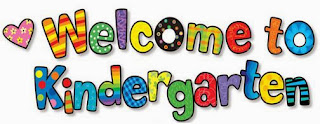It would be my dream to one day teach Kindergarden. My classroom will be filled with a lot of learning opportunities. I want to be that teacher that students will remember for the rest of their lives and I hope to make a mark on each and every one of them. My classroom will be a fun learning environment and I want my students to know that they can accomplish anything if they put their minds to it and try their hardest. I want to teach my students a lot but I also want them to learn from each other. As I teacher, I hope to be a person that my students can trust and rely on.
I want my students to love to learn. I hope they will walk into my classroom with smiles on their faces ready to learn. I will be active and involved in teaching my students. I hope to teach them through stories and music. Music stimulates the brain and helps children remember things a little better. It will also make things more enjoyable for them and will help them understand. I plan to do some project based learning lessons because I want them to not only learn from me, but from each other.
The major tool that I plan on using in my classroom is blogging. I have come to find out, with doing all of my C4K's this semester, that blogging is very effective for students. Even though in Kindergarden they aren't able to write lengthy blog posts, they are able to write at least a sentence or two and get their thoughts out there. Another tool I plan on incorporating in my classroom is the SMARTboard. I have learned a lot about the SMARTboard this semester and have come to love it. It's a great way for students to learn. You can have them interact in the classroom with it by having them come up and do bellringers or projects on it. It is also a fun way for students to teach their class! The third tool I think I would use would be an iPad. If I am lucky enough to have an iPad for every student in my class, I would. I find them very useful. Students can do educational games and reading on the iPad so they can learn independently. The last tool I would have in my class would be podcasts/vodcasts. I would love to record or video my students thoughts and have them go back and watch themselves.
In my classroom I would love to have a corner of it dedicated to reading. I would set up a nook for students to go over to and just read during free time. I think reading is a very important aspect for Kindergarteners to learn and grow. I definitely want to somehow incorporate music into my classroom any opportunity that I can. I will emphasize following the rules because I believe it is very important for children to learn to follow the rules at a young age.
One tool that I didn't mention in blog assignment #1 that I would like to have now would be podcasts and/or vodcasts. I have heard about them before but I was really introduced to them in EDM310. I think they are a great way for students to record themselves and then go back and critique what they do.


